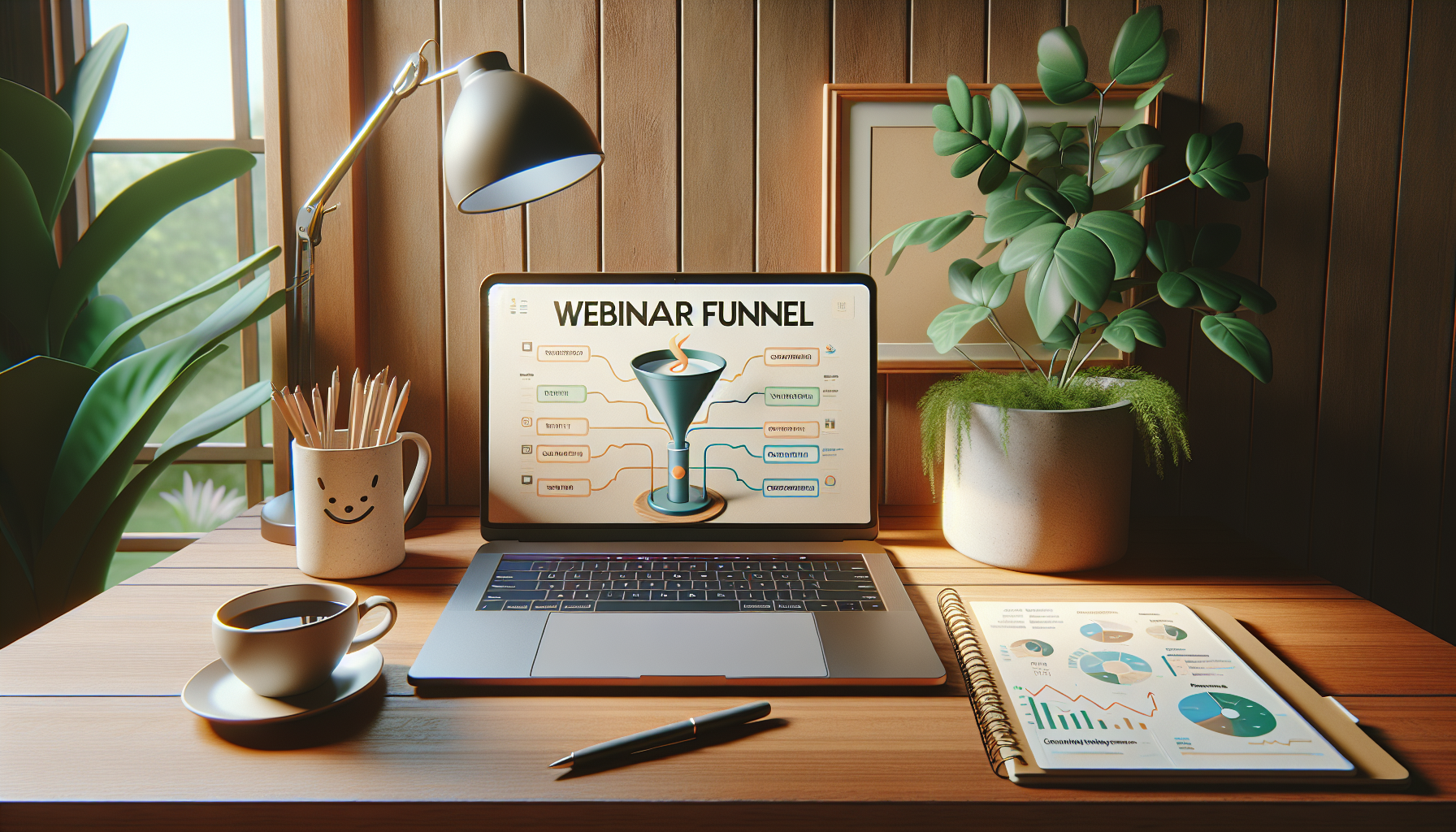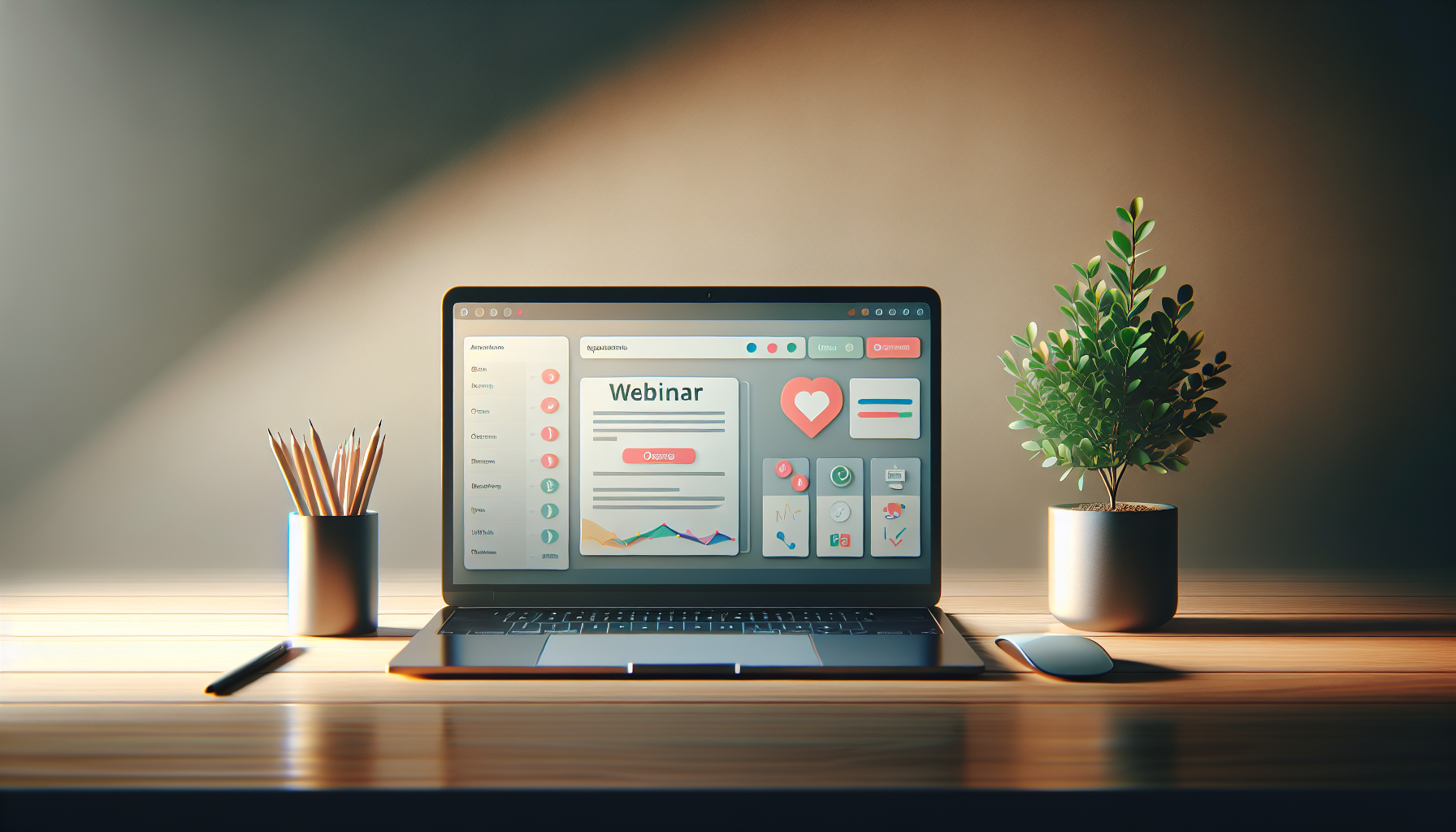Creating a webinar funnel can feel like trying to solve a Rubik’s cube blindfolded—confusing and maybe a little frustrating at times. You’re not alone if you’ve been scratching your head, wondering how to turn those budding ideas into a successful event that actually attracts attendees.
But don’t worry! Stick with me, and I promise we’ll break it down step-by-step. By the end of this guide, you’ll have a clear roadmap to create a stellar webinar funnel that not only draws people in but also keeps them engaged.
We’ll explore everything from identifying your target audience to analyzing your results afterward. So grab your favorite snack, and let’s dive into the fun of crafting your perfect webinar funnel!
Key Takeaways
Stefan’s Audio Takeaway
- Break down your webinar funnel into three stages: awareness, consideration, and conversion.
- Identify your target audience through surveys and analytics to create effective personas.
- Set clear, SMART goals for your webinar to guide your planning and measure success.
- Choose a webinar format that aligns with your audience’s preferences and your objectives.
- Craft engaging content that provides value and includes interactive elements.
- Design your landing pages to be visually appealing and user-friendly to enhance conversions.
- Promote your webinar through social media, emails, and partnerships to reach a wider audience.
- Maximize attendance by sending reminder emails and offering incentives for participation.
- Host professionally with proper equipment and a calm demeanor to engage your audience.
- Follow up with registrants after the webinar to reinforce learning and maintain engagement.
- Analyze webinar performance data to identify areas for improvement in future events.

1. Create Your Webinar Funnel Step-by-Step
Building a successful webinar funnel might seem overwhelming at first, but taking it step by step makes it manageable.
Start by mapping out the various stages of your funnel: awareness, consideration, and conversion.
For awareness, you can use social media, email marketing, and even blog posts to draw attention to your webinar.
Move on to consideration by creating engaging landing pages that highlight what attendees can expect to learn.
Finally, for conversion, ensure you have a streamlined registration process that collects vital information without being intrusive.
Automation tools can keep this funnel running smoothly, saving you time while generating leads continuously.
2. Identify Your Target Audience
Knowing who your audience is can make or break your webinar’s success.
Start by asking yourself, “Who would benefit the most from the content I am providing?”
Use tools like surveys, social media polls, or even analytics from your website to gather data on your potential attendees.
Once you’ve gathered information, create a clear persona: consider their demographics, interests, and pain points.
A targeted approach can drastically improve your engagement and conversion rates, as you’ll be speaking directly to their needs.
Remember, if 67% of buyers consumed webinars last year, your goal is to speak to those who are most likely to take action.
3. Set Clear Goals for Your Webinar
Before you start planning your webinar, it’s crucial to set specific goals for what you want to achieve.
Are you looking to generate leads, increase sales, or build brand awareness? Clearly defining these can streamline your planning process.
For instance, if your goal is lead generation, think about how many registrations you would like to achieve and design your funnel accordingly.
Consider key metrics such as registration rates and post-webinar conversions, as they reflect the success of your goals.
A simple strategy is to use SMART goals—Specific, Measurable, Achievable, Relevant, and Time-bound—which can help keep you focused and accountable.
Furthermore, creating actionable steps to meet these goals will keep your team aligned as you prepare for your big day.

4. Choose the Best Webinar Format
Selecting the right format for your webinar can significantly impact how your content is received.
Popular options include live webinars, on-demand (evergreen) webinars, and hybrid formats.
Live webinars create a sense of urgency and allow real-time interaction, which can boost engagement.
On-demand webinars free you from scheduling conflicts, making your content available anytime, which can appeal to a broader audience.
For example, the evergreen webinar “The Science of Email Marketing” by HubSpot attracted over 20,000 leads within a year.
Consider your audience’s preferences and your goals when making this decision.
If you want immediate feedback, go live; if you’re looking for flexibility, on-demand may work better.
5. Develop High-Quality Webinar Content
Your webinar’s content needs to provide real value to keep your audience engaged.
Start by outlining your key points and creating a compelling narrative around them.
Use visuals like slides, videos, and infographics to keep things interesting.
Interactive elements, such as polls or Q&A sessions, can also enhance engagement.
Remember, you are competing for attention—67% of buyers have consumed webinars in the past year.
Your content should be informative, actionable, and directly relevant to your audience’s needs.
Feel free to share personal stories or case studies to make complex topics easier to understand.
6. Design Your Webinar Funnel Pages
The design of your funnel pages plays a crucial role in converting visitors into attendees.
Create a dedicated landing page that clearly outlines what your webinar is about and what attendees will gain.
Make registration easy; ask for minimal information to reduce friction.
Your pages should have visually appealing graphics and a clear, focused call to action.
Include testimonials or previous attendees’ feedback to enhance credibility.
Don’t forget to make your pages mobile-friendly, as many users will register on their phones.
7. Promote Your Webinar Effectively
Promotion is where many people fall short, but not you!
Leverage social media platforms—3.8 billion users are waiting for your content.
Create eye-catching posts that encourage sharing.
Email marketing is also a powerful tool; send out catchy invites to your existing contacts.
Consider running paid ads to reach a wider audience, targeting demographics specific to your webinar.
Partnering with influencers or industry leaders can give your webinar an immediate credibility boost.
Finally, remember that frequency matters—don’t just post once and forget about it.
8. Maximize Attendance and Engagement
Getting people to register is great, but having them show up is even better!
Send reminder emails—not just one but a series leading up to the event.
Use attention-grabbing subject lines that create urgency.
Engagement during the webinar is just as important; ask questions, use polls, and encourage participation.
Consider offering incentives, like exclusive content or discounts, for those who attend.
Emphasizing that the content is actionable can also increase attendance rates.
9. Host Your Webinar Professionally
First impressions matter, and hosting your webinar professionally can set the tone.
Ensure you have a reliable internet connection and quality audio-visual equipment.
Practice your delivery ahead of time and consider running a trial session.
Set up your environment—good lighting and a clean backdrop can make a difference.
Stay calm and engage with your audience; it will help you connect better.
Use a platform that is user-friendly and offers features like screen sharing and chat.
10. Follow Up with Registrants
Following up is crucial, as many attendees may quickly forget what they learned.
Send a thank-you email within 24 hours, summarizing key points from the webinar.
Include a recording of the session for those who couldn’t attend live.
You can also add links to relevant resources, such as your website or additional content, to keep the engagement going.
This is also the perfect time to include a call to action, like signing up for a free trial or enrolling in a course.
11. Analyze and Improve Your Webinar Funnel
Finally, take the time to evaluate how well your webinar funnel performed.
Measure key metrics like registration rates, attendance rates, and post-webinar conversions.
Ask for feedback from attendees to learn what worked and what didn’t.
Use analytics tools to track engagement and determine which promotional channels were most effective.
Data never lies, and refining your approach can lead to even more successful webinars in the future.
Implement the lessons learned to make your next funnel even better.
FAQs
The first step is to outline your webinar funnel step-by-step. This includes defining your target audience, setting goals, choosing the format, and planning the content to ensure a smooth flow and successful execution.
To effectively promote your webinar, utilize social media marketing, email campaigns, and paid advertisements. Engage your audience with captivating content and incentives to increase registrations and attendance.
Maximize engagement by using interactive tools like polls and Q&A sessions. Encourage participants to share their thoughts, and address customer queries in real time to keep the audience attentive and engaged throughout the webinar.
Following up with registrants is crucial. It helps reinforce your message, provides additional resources, gathers feedback, and nurtures leads. This encourages conversions and builds relationships with your audience for future engagements.
